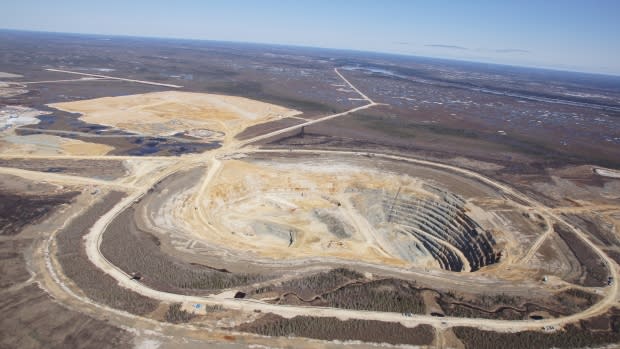Environmental group takes De Beers' Ontario diamond mine to task

An environmental group has filed a private prosecution against diamond giant De Beers. It is accusing the company of violating the provincial Water Act by failing to report, as required, the levels of neurotoxins found downstream from its Victor mine in northern Ontario.
The Wildlands League alleges De Beers has failed for seven years to report levels of mercury and methylmercury from five of nine monitoring stations around the mine, as required under the terms of its approval.
“The downstream stations were not being reported on,” Anna Baggio, director of conservation planning for the league, told Yahoo Canada News.
The mine, located near James Bay about 100 kilometres west of the Attawapiskat First Nation, came online in 2008 following lengthy federal and provincial assessments.
Upstream and downstream monitoring of surface water was one of the many conditions placed on the approval of the mine.
None of the allegations have been tested in court and De Beers has not responded to the court filing. De Beers also did not reply to a request for comment from Yahoo Canada News.
Following the initial report from Wildlands a year ago, the company called the allegations “wildly misleading.”
De Beers spokesman Tom Ormsby told the Canadian Mining Journal that results from 3,200 water samples taken each year – including more than 1,700 mercury tests from surface, groundwater and fish – are submitted to the Ontario Ministry of Environment, though not all are cited in the report submitted to the ministry.
Wildlands said their review found that while the company did report upstream test results, it did not submit results from monitoring stations downstream. She said that’s been the case for seven years.
“We alerted Ontario and De Beers to this over a year and half ago,” Baggio said.
“De Beers denied there was a problem. Ontario, for whatever reason, they didn’t respond as we’d hoped.”
Mercury is found naturally in air, water and soil. While a recognized health concern in its natural form, people are at greater risk of exposure to methylmercury.
Mercury can be converted to the organic compound methylmercury by bacteria in water, where it enters the food chain and concentrates as larger animals feed on smaller.
De Beers has applied for approval of its Tango mine in the Ring of Fire region in northern Ontario. Company officials have also mused publicly about extending the life of the Victor mine by developing other potential sites and processing the diamonds at the Victor mine, Baggio said.
“So there’s up to 16 [diamond mines] potentially that could be on the horizon and so the monitoring program needs to have integrity and there needs to be enforcement,” Baggio said.
Wildlands believes the provincial Environment Ministry is not properly overseeing the existing project, even after the group took their concerns to provincial officials 18 months ago.
“There was just silence from Ontario for months and months and months. Finally, we thought somebody has to step in and hold the company accountable,” Baggio said.
“We were hoping that Ontario would take action, that they would actually do something.”
The private prosecution was filed last week and De Beers was served on Monday. A court appearance is scheduled for mid-January.


